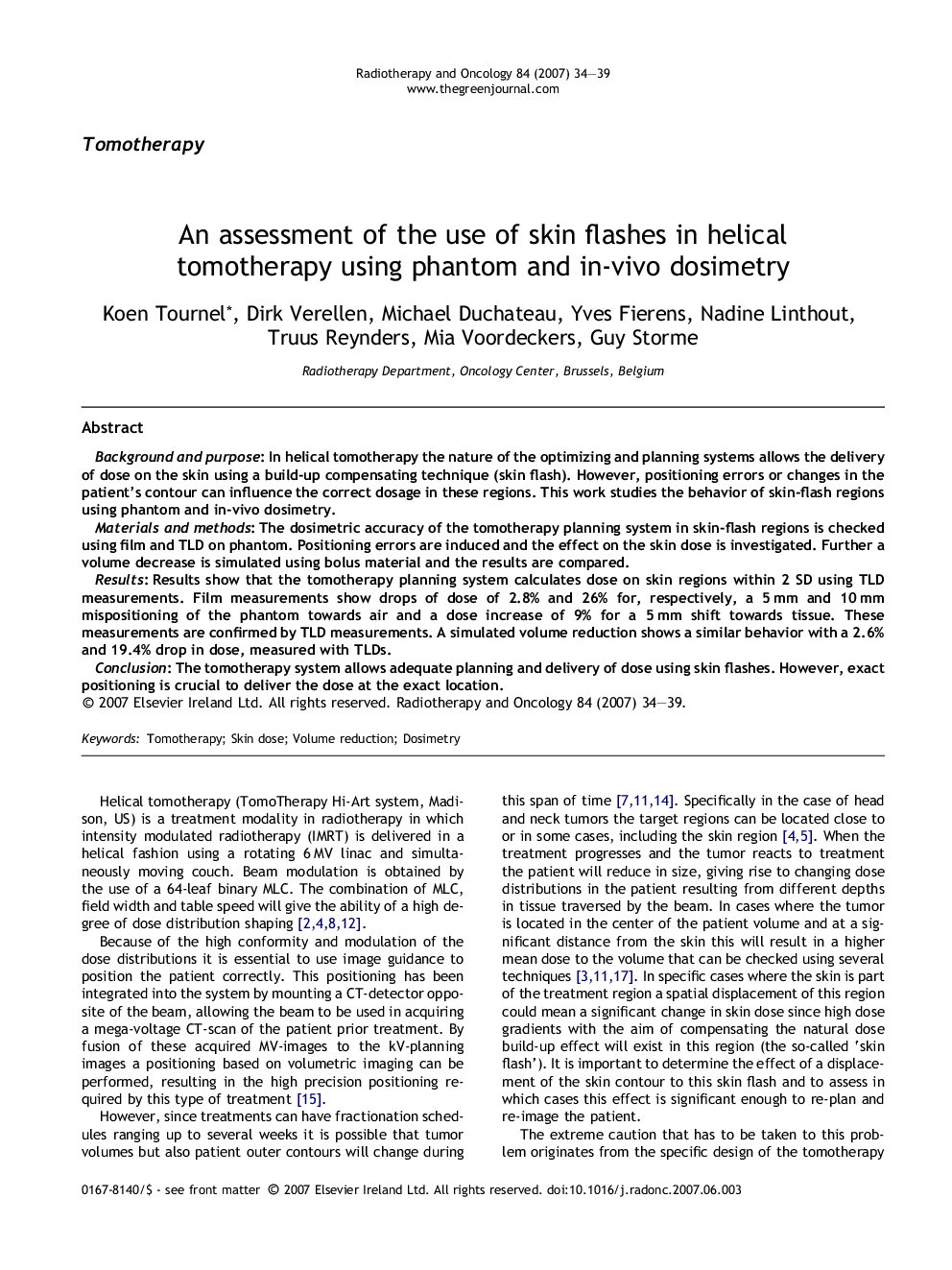| Article ID | Journal | Published Year | Pages | File Type |
|---|---|---|---|---|
| 2160324 | Radiotherapy and Oncology | 2007 | 6 Pages |
Background and purposeIn helical tomotherapy the nature of the optimizing and planning systems allows the delivery of dose on the skin using a build-up compensating technique (skin flash). However, positioning errors or changes in the patient’s contour can influence the correct dosage in these regions. This work studies the behavior of skin-flash regions using phantom and in-vivo dosimetry.Materials and methodsThe dosimetric accuracy of the tomotherapy planning system in skin-flash regions is checked using film and TLD on phantom. Positioning errors are induced and the effect on the skin dose is investigated. Further a volume decrease is simulated using bolus material and the results are compared.ResultsResults show that the tomotherapy planning system calculates dose on skin regions within 2 SD using TLD measurements. Film measurements show drops of dose of 2.8% and 26% for, respectively, a 5 mm and 10 mm mispositioning of the phantom towards air and a dose increase of 9% for a 5 mm shift towards tissue. These measurements are confirmed by TLD measurements. A simulated volume reduction shows a similar behavior with a 2.6% and 19.4% drop in dose, measured with TLDs.ConclusionThe tomotherapy system allows adequate planning and delivery of dose using skin flashes. However, exact positioning is crucial to deliver the dose at the exact location.
